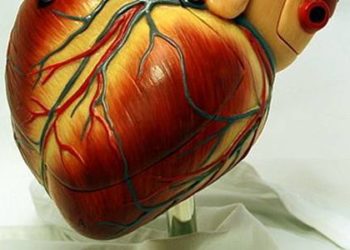Community health workers improve outcomes in low socioeconomic status patients (IMPaCT)
Image: CC/CDC Health Workers
1. Community health worker (CWH)-initiated individualized action plans increased post-discharge primary care follow-up and reduced multiple 30-day readmissions in patients with low socioeconomic status (SES).
2. The patients in the treatment arm received better discharge communication and reported better mental health and patient activation, with no differences in physical health, medication adherence, or satisfaction with medical care.
Evidence Rating Level: 1 (Excellent)
Study Rundown: With the implementation of the Affordable Care Act, healthcare systems will be assessed based on patient outcomes. Addressing socioeconomic factors is one method by which hospitals can improve quality of care. The study authors assess the effect of the Individualized Management for Patient-Centered Targets (IMPaCT) using CHWs on post-hospital outcomes among high-risk, low-SES patients, and found that the intervention increased rates of post-discharge follow-up. While this intervention did not significantly decrease the proportion of single 30-day readmissions, in the subgroup of readmitted patients, the intervention decreased the number of recurrent readmissions. The intervention also improved other secondary outcome measures, including quality of discharge communication, patient activation, and mental health.
This study provides strong evidence that expanding the scope of traditional case management services beyond hospital discharge provides value for both the patients and the healthcare system. By not limiting the study to patients with certain conditions, the intervention used a patient-centered model that has the potential to be widely applicable to most hospital admissions. The study is limited by not being able to adequately capture the number of ED visits post-discharge, which can significantly contribute to the healthcare burden and the brief duration of the CHW intervention. Other factors that would determine the success of this intervention would be patient willingness to participate and investment of hospital resources for hiring and standardized training of personnel for larger-scale implementation. Future work could involve identification of target outcomes for this intervention along with associated cost-effectiveness analyses.
Click to read the study, published today in JAMA Internal Medicine
Relevant Reading: Promoting Effective Transitions of Care at Hospital Discharge: A Review of Key Issues for Hospitalists
In-Depth [randomized control trial]: This study was a two-armed single-blinded randomized control trial conducted at two academic hospitals. A total of 446 patients of the 683 eligible were randomized to either receive the usual care or assigned to IMPaCT, a CHW model developed by study authors based on qualitative participatory action research with a high-risk low-SES patient population. A total of 237 patients (34.5% of eligible) declined to participate. The 2 study arms had similar baseline characteristics with the exception of insurance status and percentage of patients that had a usual healthcare provider.
The rates of post-hospital primary care follow-up within 14 days was higher in the treatment arm (60.0% vs 47.9%; p =.02). There was no difference in rates of any readmission between the 2 arms but the rate of multiple readmissions was reduced in the treatment arm (2.3% vs 5.5%; p= .08). The patients in the treatment arm reported higher quality discharge communication (91.3% vs 78.7%; p=0.002) and were noted to have improved mental health (6.7% vs 4.5%, p=0.02) and patient activation (3.4 vs 1.6; p=0.05) outcomes. There were no statistically significant differences between the two groups in terms of satisfaction with medical care, medication adherence, or improvements to physical health.
©2012-2014 2minutemedicine.com. All rights reserved. No works may be reproduced without expressed written consent from 2minutemedicine.com. Disclaimer: We present factual information directly from peer reviewed medical journals. No post should be construed as medical advice and is not intended as such by the authors, editors, staff or by 2minutemedicine.com. PLEASE SEE A HEALTHCARE PROVIDER IN YOUR AREA IF YOU SEEK MEDICAL ADVICE OF ANY SORT.







